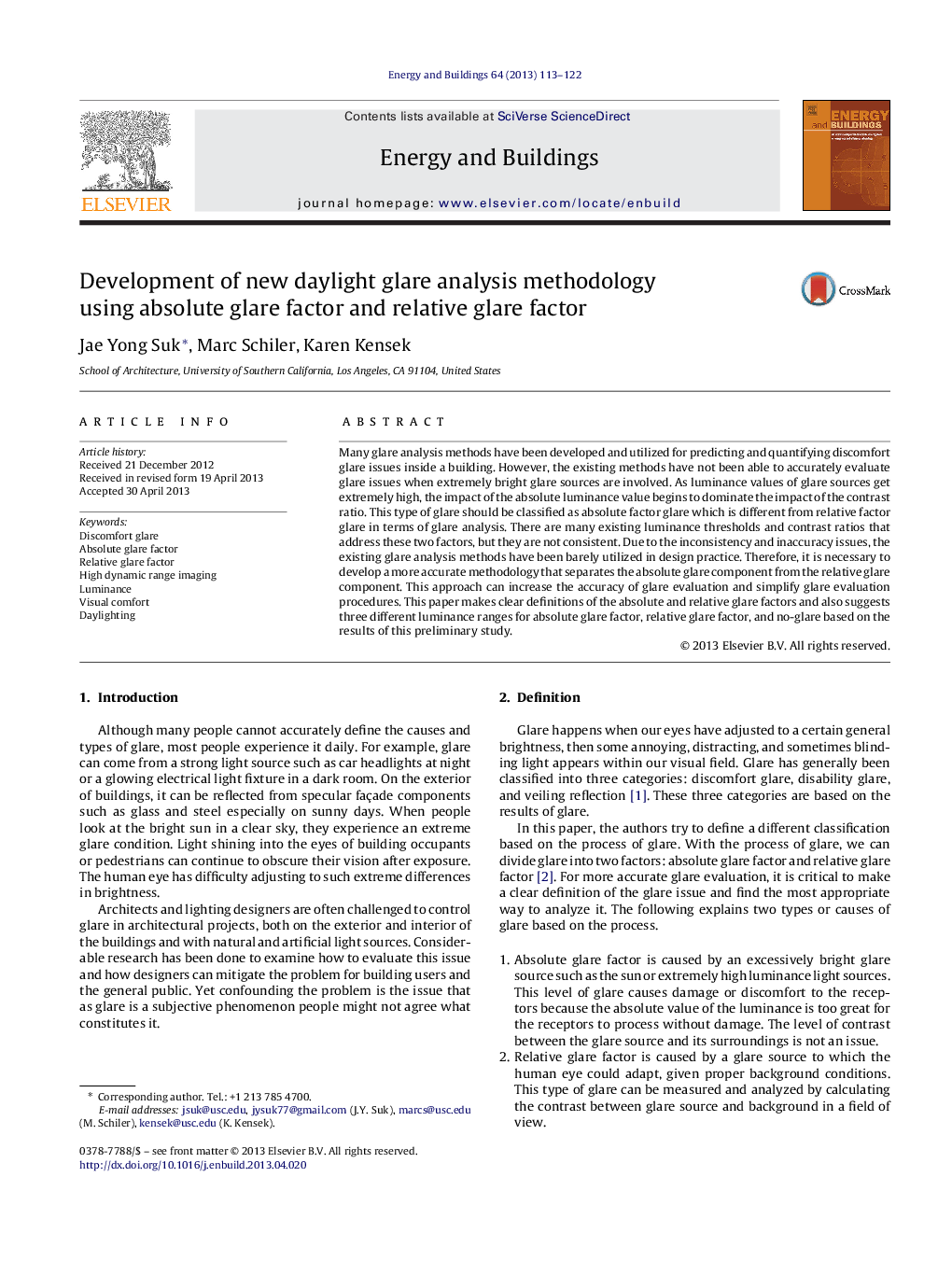| کد مقاله | کد نشریه | سال انتشار | مقاله انگلیسی | نسخه تمام متن |
|---|---|---|---|---|
| 263387 | 504074 | 2013 | 10 صفحه PDF | دانلود رایگان |

• Existing daylight glare metrics are barely used in daylighting design practice.
• Existing glare analysis methods are inconsistent and inaccurate.
• Existing luminance thresholds for glare analysis are inconsistent and inaccurate.
• A simplified and consistent daylight glare analysis method should be developed.
• This begins with separating absolute and relative glare factors.
Many glare analysis methods have been developed and utilized for predicting and quantifying discomfort glare issues inside a building. However, the existing methods have not been able to accurately evaluate glare issues when extremely bright glare sources are involved. As luminance values of glare sources get extremely high, the impact of the absolute luminance value begins to dominate the impact of the contrast ratio. This type of glare should be classified as absolute factor glare which is different from relative factor glare in terms of glare analysis. There are many existing luminance thresholds and contrast ratios that address these two factors, but they are not consistent. Due to the inconsistency and inaccuracy issues, the existing glare analysis methods have been barely utilized in design practice. Therefore, it is necessary to develop a more accurate methodology that separates the absolute glare component from the relative glare component. This approach can increase the accuracy of glare evaluation and simplify glare evaluation procedures. This paper makes clear definitions of the absolute and relative glare factors and also suggests three different luminance ranges for absolute glare factor, relative glare factor, and no-glare based on the results of this preliminary study.
Journal: Energy and Buildings - Volume 64, September 2013, Pages 113–122